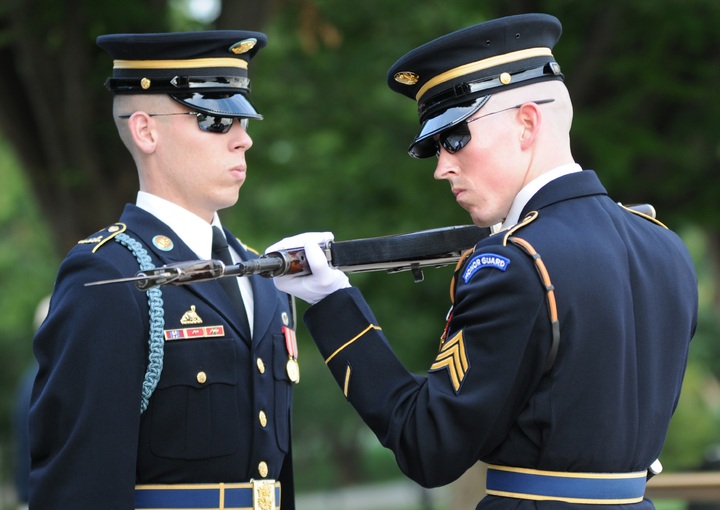
-Photo by Mikhail Nilov on Pexels.com
Whether you are on a phone call, a video meeting or chat, in a face-to-face meeting, or simply ordering a coffee, most of our communication is verbal. Therefore, to communicate effectively as a leader, you require good verbal communication skills. Given that most people develop enough vocabulary by their second birthday, a leadership lesson on verbal communication almost seems silly. Given all the variables that go into transmitting a verbal message to another, and all the variables required to receive it as intended, it is amazing any of our conversations come close to actual communication socially, let alone professionally. Everything from the intended definition of a word, to cultural filters, real noise, the noise in the other person’s head, and a ton of other variables all act in concert to prevent the real message from being received. I read somewhere (if I remembered where, it would be in the references below) that one of the biggest problems with communication in the workplace is the impression that it happened. This essay examines issues with verbal communication and offers suggestions to improve leadership verbal communication.
Non-verbal cues
In his book Signals: How to Use Body Language for Power, Success and Love, Allan Pease says about verbal communication, “The total impact of a message is about 7 percent verbal (words only) and 38 percent vocal (including tone of voice, inflection and other sounds) and 55 percent non-verbal.” (Pease, 1984, P. 6). Pease cites research for his book dating back to the 1800s related to verbal communication and all its non-verbal complexities. Clearly there is more to verbal communication than just words.
Tone is the quality of a person’s voice that communicates, wit, sorrow, compassion, intensity, and sarcasm. I worked for a person who used a sarcastic tone in most of his verbal communication. It was not uncommon one week to be reprimanded for failing to do something he told you to do which seemed strange, and delivered in his normal sarcastic tone. As a result, the next time you received direction to do something that seemed odd, delivered in the sarcastic tone, you did it. Imagine the surprise when you were called on the carpet for doing what you were told to do. As a mid level leader in that organization, it sucked never knowing what the boss really expected because of his sarcasm.
When you speak, monitor your tone. Look for other non-verbal cues for the person you are speaking to ensuring they understand the importance of the message. Remember, sometimes just because of your position, people will likely place greater urgency on your comments even when you state an observation or make an off handed remark.
I had occasion to conduct a sight visit for one of my subordinate military units. Things were jacked up and no matter how hard I tried to find something to praise, every request resulted in uncovering another issue. I pulled the senior noncommissioned officer to the side and calmly asked about the situation. I told him that as the senior leader on the ground, it was not his job to actually do all the work. There were other NCOs present and junior enlisted all watching him work. I told him to look around and determine what needed to be done. I wanted him focusing his attention on the most important task and delegate the others to junior NCOs.
I later learned the leader felt he had been chewed out. He was a new senior NCO and never had the experience of interacting with a leader at my level in the field. This individual and I had known each other for several months. We had a number of leadership development sessions. However, it was his first time as a Senior NCO leading troops in the field. What was intended to be a simple coaching session, was perceived as a reprimand. Reactions can show you how the other person perceives what you say. The example show it is not always easy for leaders to perceive.
Barriers
There are two types of barriers to verbal communication, physical and psychological. Of the two, the first is easiest to recognize and overcome. The later applies to the sender and receiver. Physical barriers are things we can see and hear that interfere with the transmission and receiving of messages between people. Examples include, things we recognize as barriers such as walls, and divider. It helps to be in the same room to be on the same page. Noise in the area is another common barrier. We have a white noise machine to help mask confidential conversations in my office. Sometimes, they mask the conversation between two people who should be talking. In our modern age, technology also inserts physical barriers. If you are engaged in a phone call or video conference and the system has problems, it is often difficult to understand what others say. Most of these barriers can be overcome. Genrally the means to fixing them is evident.

-Photo by Arantxa Treva on Pexels.com
Psychological barriers are not so clear. There are two parts to psychological barriers; those of the sender and those of the receiver. There are a variety of causes, including lack of trust, the most common. Additional barriers include lack of confidence of the sender or receiver, overconfidence, and stuff happening outside the conversation such as problems at home or with other co-workers. Google found that overcoming psychological barriers is the single biggest thing leaders can do to develop winning teams. Unlike physical barriers, leaders cannot see psychological barriers, but with careful listening, you may hear the other person’s barriers in their responses. However, recognizing and overcoming your own psychological barriers is an even bigger challenge.
Process
Process is the actual act of communicating. It begins when you recognize want to send a message to others. You develop the message through encoding, selecting the timing, words, and tone. Transmitting the message is the act of speaking. The next step is receipt by the other. Remember, the other begins receiving the message as soon as they detect your non-verbal cues that a message is coming their way.
Within receiving, there is a subcategory of listening. As a leader, you should consider the four levels of listening. Listening from habit for information confirming what you know. Listing from outside when you notice differences from what you know and what is new. Listening from within the other develops empathy. Listening from the source when you connect to the future and generate new ideas (Scharmer, 2020).
The first step in decoding is listening. Listening influences how messages are decoded. Decoding also has to overcome physical and psychological barriers. Decoding and barriers interfere with how the intended message is heard and understood. Therefore, you need to seek responses and feedback.
Responses and feedback provide you information about how well the message you intended to send were received. This provides you the opportunity to clarify what you said. Correct misunderstandings. The other may have questions. If you do not receive feedback, it is your responsibility to seek it. Just saying something to someone else does not mean you communicated. Only when you have confirmation the message was received and understood, have you communicated.

-Photo by Markus Spiske on Pexels.com
Verbal communication is a common leadership activity. Because it is so common, people barely think about it. Whether you are ordering coffee, conducting a one-on-one, or in a virtual meeting, leaders (including me) say things without thinking. The result is hurt feelings, broken trust, and lack of understanding. All result in reduced productivity and organizational growth. Responsible leaders understand and learn how to use non verbal cues to determine how others receive messages. They recognize barriers and find ways to reduce the impact. They understand the process of transmitting a message and ensuring it is received and understood. Reflect on your intended messages and select impactful words. Observe to determine if your message resulted in the necessary change. Verbal communication is an activity that seems easy on the surface because we have done it for so long. We fail to recognize how hard it is to do well. Take time to learn how to talk better to people so you have greater influence to help them grow and accomplish your organization’s mission.
References
Beebe, S. and Masterson, J. (2000) Communicating in small groups; Principles and practices. (8th Ed.). Pearson. Boston, MA
Duhigg, C. (2016) What Google learned from its quest to build the perfect team. New York Time Magazine. Retrieved from: https://www.nytimes.com/2016/02/28/magazine/what-google-learned-from-its-quest-to-build-the-perfect-team.html?searchResultPosition=1 on 4/26/22.
Oshry, B. (2010) People in context: Part I. The Systems Thinker. Pegasus Communications. Vol. 21, No. 4, May 2010.
Pease, A. (1984). Signals: How to use body language for power, success and love. Bantam Books, Inc. New York, NY.
Scharmer, O (2020) Levels of listening. Handout from Leadership Exchange and Coaching, Cohort 12.
Wickham Jr., J. and Joyce, R. (1983) FM 22-100, Military leadership. Department of the Army. Washington, DC
(C) 2024 Christopher St. Cyr

































